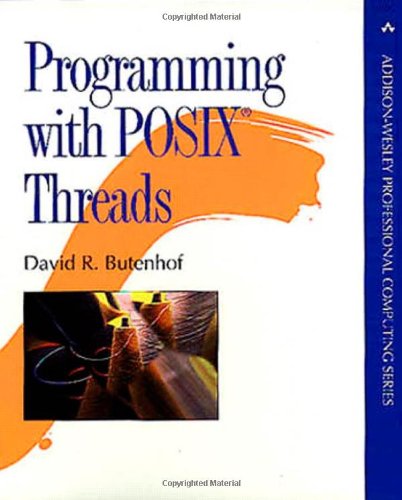Programming with POSIX threads pdf
Par dunn ernest le lundi, septembre 19 2016, 00:12 - Lien permanent
Programming with POSIX threads by David R. Butenhof


Programming with POSIX threads David R. Butenhof ebook
Page: 398
Format: djvu
Publisher: Addison-Wesley Professional
ISBN: 0201633922, 9780201633924
Http://www.itpub.net/thread-1465552-1-1.html Programming With POSIX Threads(POSIX多线程程序设计)中文版扫描版POSIX多线程程序设计(Programming with POSIX Threads)http://ishare.iask.sina.com.cn/f/16295865.html. Attempts to show how the library s features can be used in quot real-life quot programs It explains the different tools defined by the library shows how to use. The problem with threads is the It turns out that POSIX Threads, Mach Threads, Windows Threads, Java Threads, and C# Threads all work very much the same, since they're all implemented in more or less the same way. In order to take full advantage of the capabilities provided by threads, a standardized programming interface was required. Both are available in Debian: $ sudo aptitude install eztrace vite. PThreads Programming:A POSIX Standard for Better Multiprocessing .Bradford Nichols et al. Technical A good tutorial to learn about POSIX threads programming -. Hi all, can someone explain for me the output of this program : Code: #include #include #include #inc. Thread priorities and synchronisation is quite a thorny area and you need to be very careful you don't end up with priority inversion and cause deadlock. Every modern operating system has support for threads, and most programming environments provide some level of support for threading. Comments about O'Reilly Media PThreads Programming: The book. Share this: Like this: Like Loading By Arun • Posted in Technical • Tagged pthreads tutorial · 0. The easiest way I found to visualize the runtime behavior of POSIX threads is the combination of EzTrace and ViTE. What threads give you is the ability for your program to do more than one thing at once . For UNIX systems, this interface has been specified by the IEEE POSIX 1003.1c standard (1995). Real-time, and multiprocessing are included.POSIX threads,. You should read it at least until “Starting a process” part, and if you're not afraid of C and want to know more about low-level workings of threads, POSIX system calls etc – keep reading until the end.